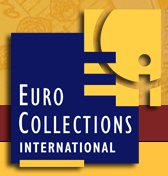
Belarus 2009 20R Nutcracker Fairy Tale Silver UNC
Written in 1816 by Ernst Theodor Wilhelm Hoffmann (Better known as his pen name E.T.A. Hoffmann (Ernst Theodor Amadeus Hoffmann)) and originally entitled "The Nutcracker and the Mouse King", this classic fairy tale from Germany tells the story of Marie, a twelve year old girl who is given a Nutcracker doll on Christmas. In the night the Nutcracker doll comes to life and does battle with the evil Mouse King. Little does Marie know that the Nutcracker doll is in fact a handsome young man who was cursed. Her godfather, Drosselmeyer, tells her the story of the Mouse Queen, who set a curse upon the King's daughter after the king arranged for mouse traps to be made which killed her children. It took many years to find a cure for the curse but eventually they did, with the help of Drosselmeyer's nephew, who broke the curse on the Princess but accidentally had it fall upon him, turning him into a Nutcracker doll.
Later, the Nutcracker asks Marie for a sword with which he defeats the Mouse King and takes Marie off to a magical doll land. Eventhough her parents don't believe her, she pledges her love to the Nutcracker doll and the curse is broken, with Drosselmeyer's nephew appearing as a handsome young man once again.
Famously, beautiful fable was turned into a ballet by Russian composer Pyotr Ilyich Tchaikovsky and choreographers Marius Petipa and Lev Ivanov, in 1892. It has become one of Tchaikovsky's most famous compositions, and one of the most popular ballets in the world.
The reverse design shows imagery from the story of The Nutcracker, with the doll itself charging towards the mouse army with sword raised. Seem below in mirroed form is the handsome young nephew. Marie is to the right in front of a stylised Christmas tree with her eyes closed. Set within the hat of the Nutcracker is a glittering green zircon crystal. The inscription for "Nutcracker" is in the bottom left. The obverse, common to all coins in the Fairy Tales series, shows a young boy and girl sitting upon a crescent moon and reading from an open book. Around them is the night sky filled with stars. Around the top of the coin is the inscription for "Republic of Belarus" with the State Emblem in the middle. Below is the inscription for "Twenty Roubles" and the year of issue, 2009.
The coin is struck from 26.15 grams of 92.5% silver (total weight 28.28 grams) on a 38.61mm flan. To give the coin an "antiqued" appearance a special technique of oxidizing has been employed and the coin is supplied in a capsule for protection. Only 25,000 of these coins have been struck for worldwide distribution.
Also available in the Belarus Fairy Tale Series:

























